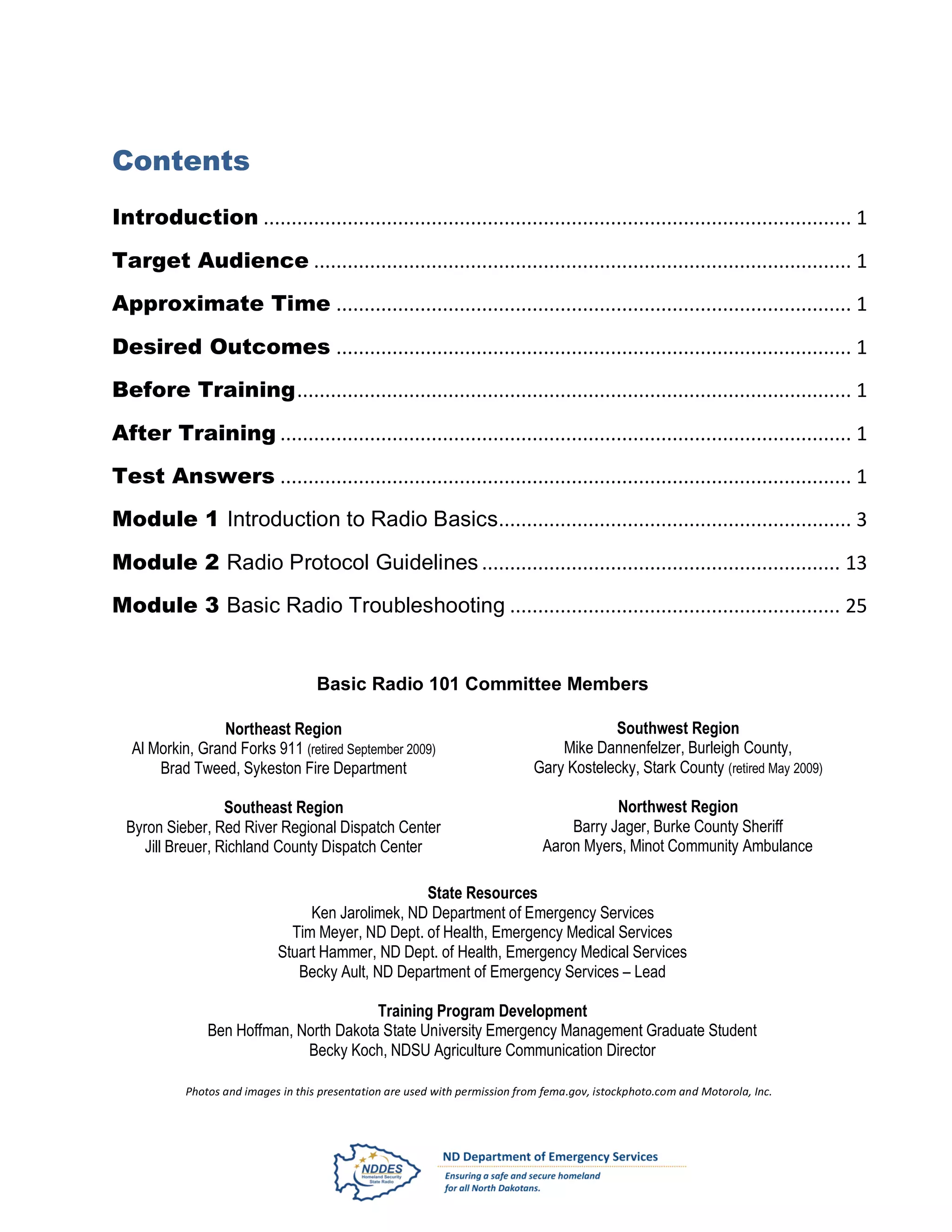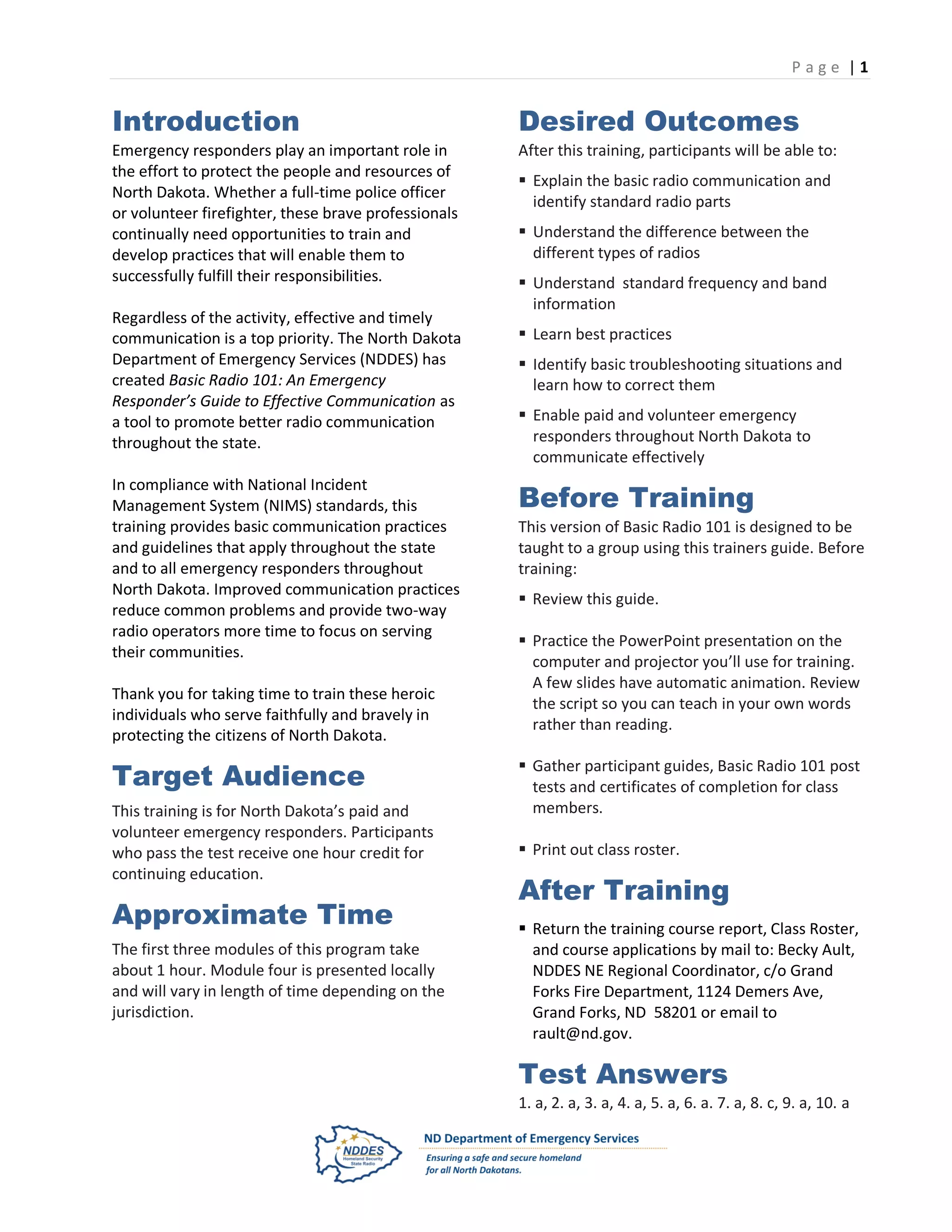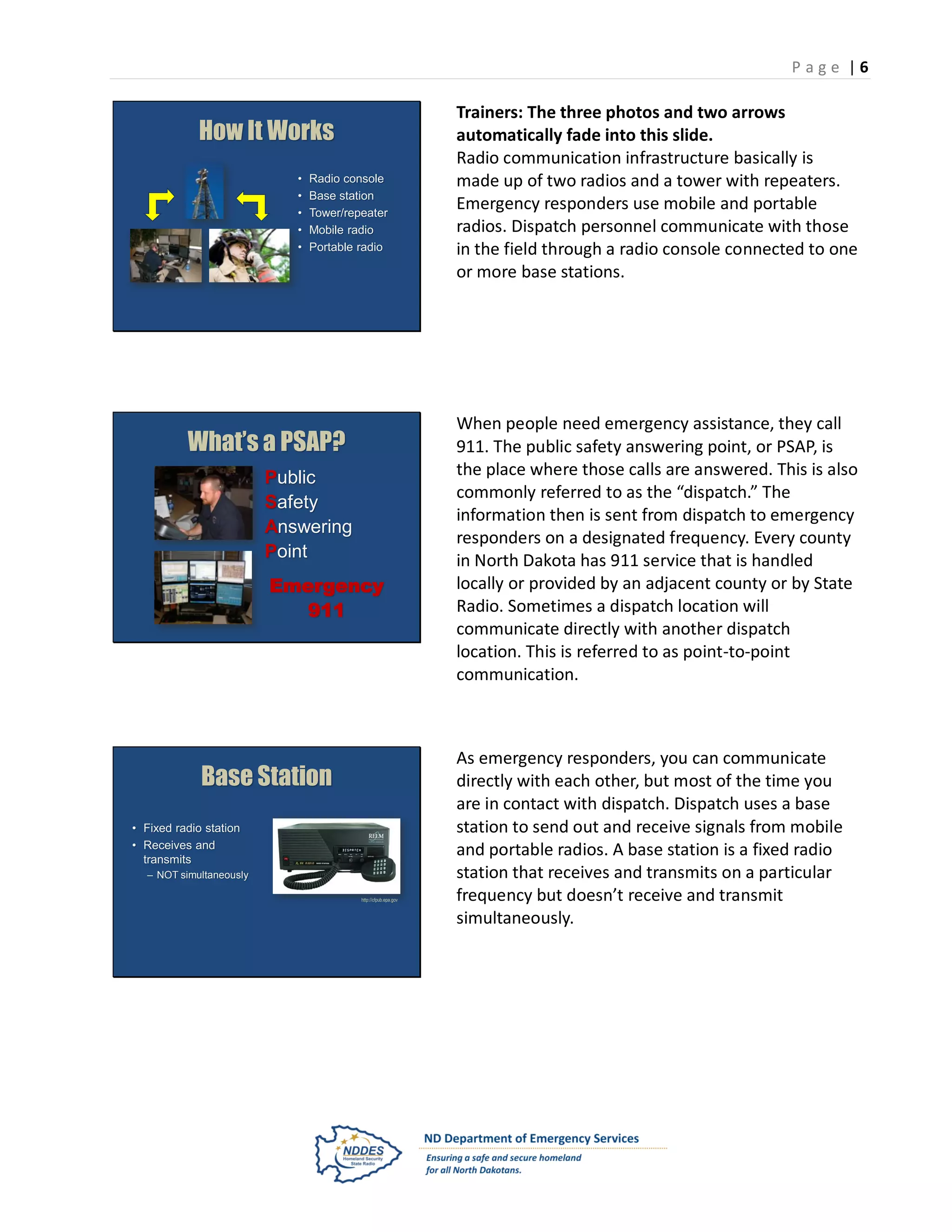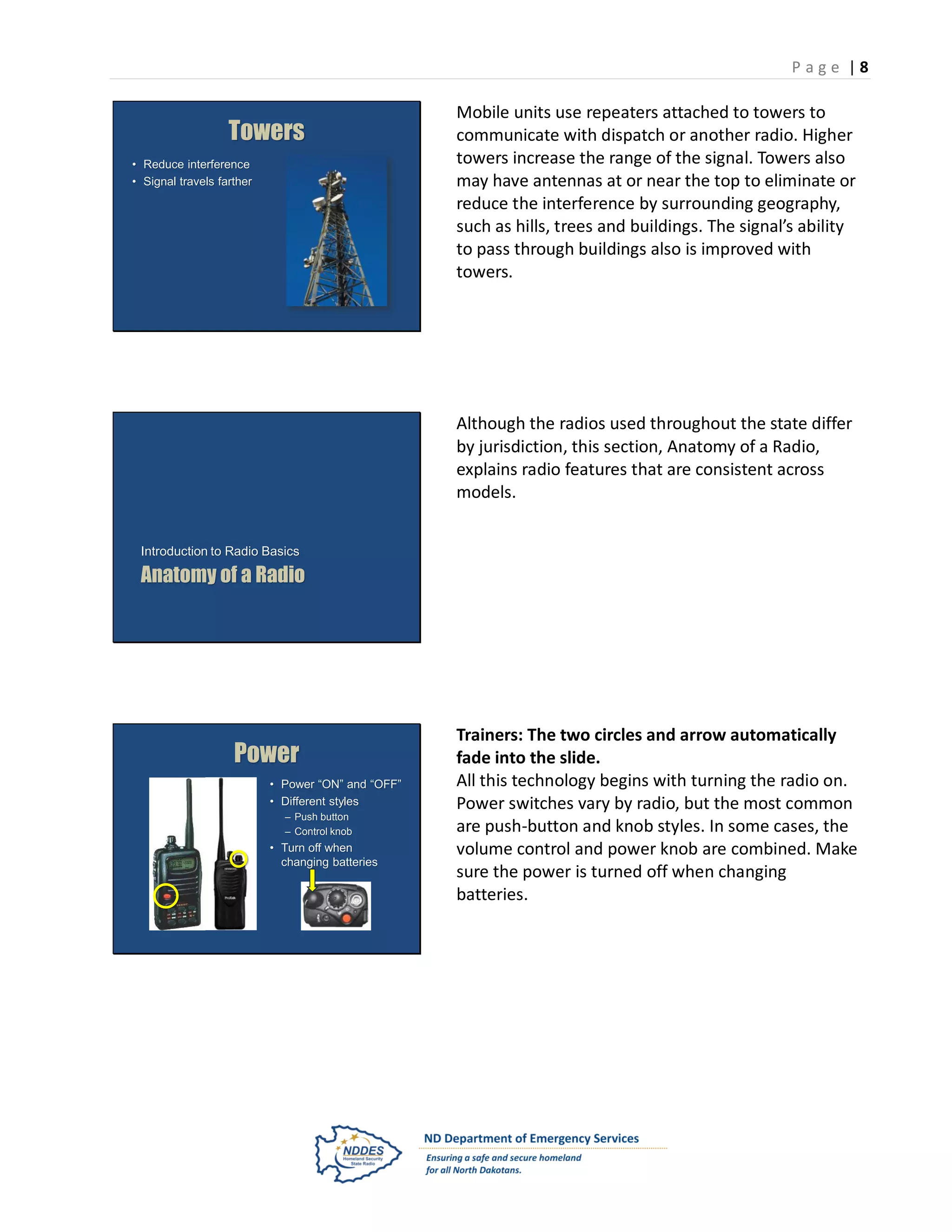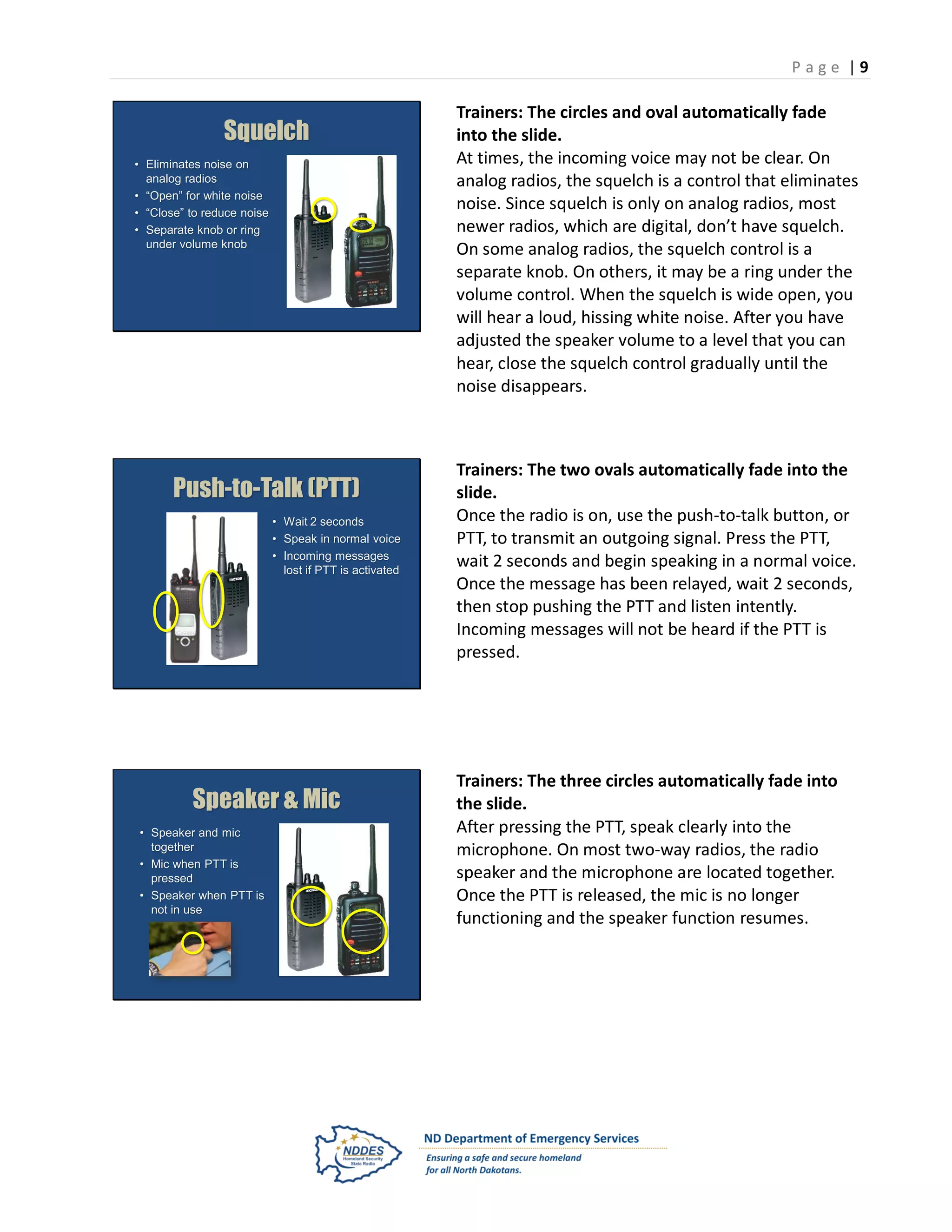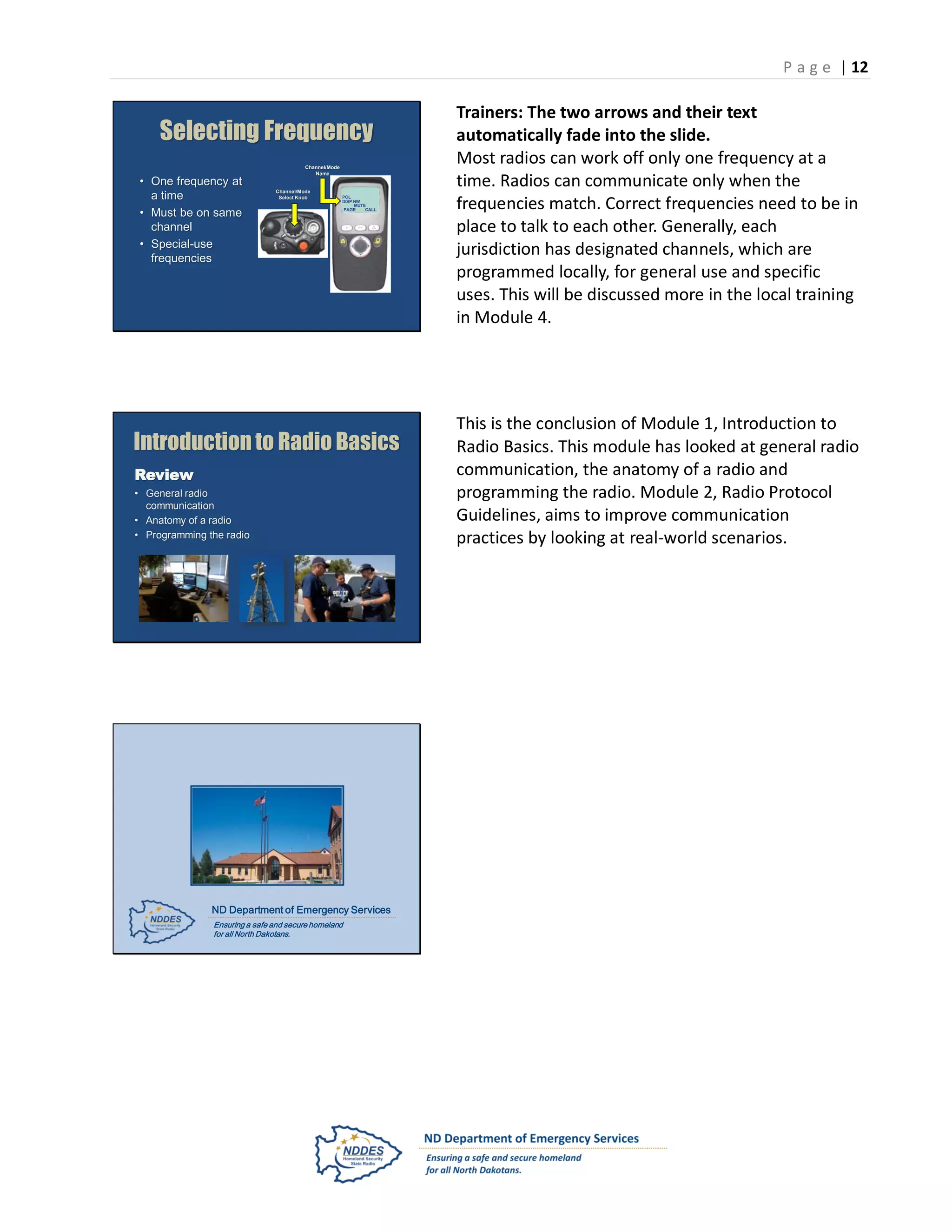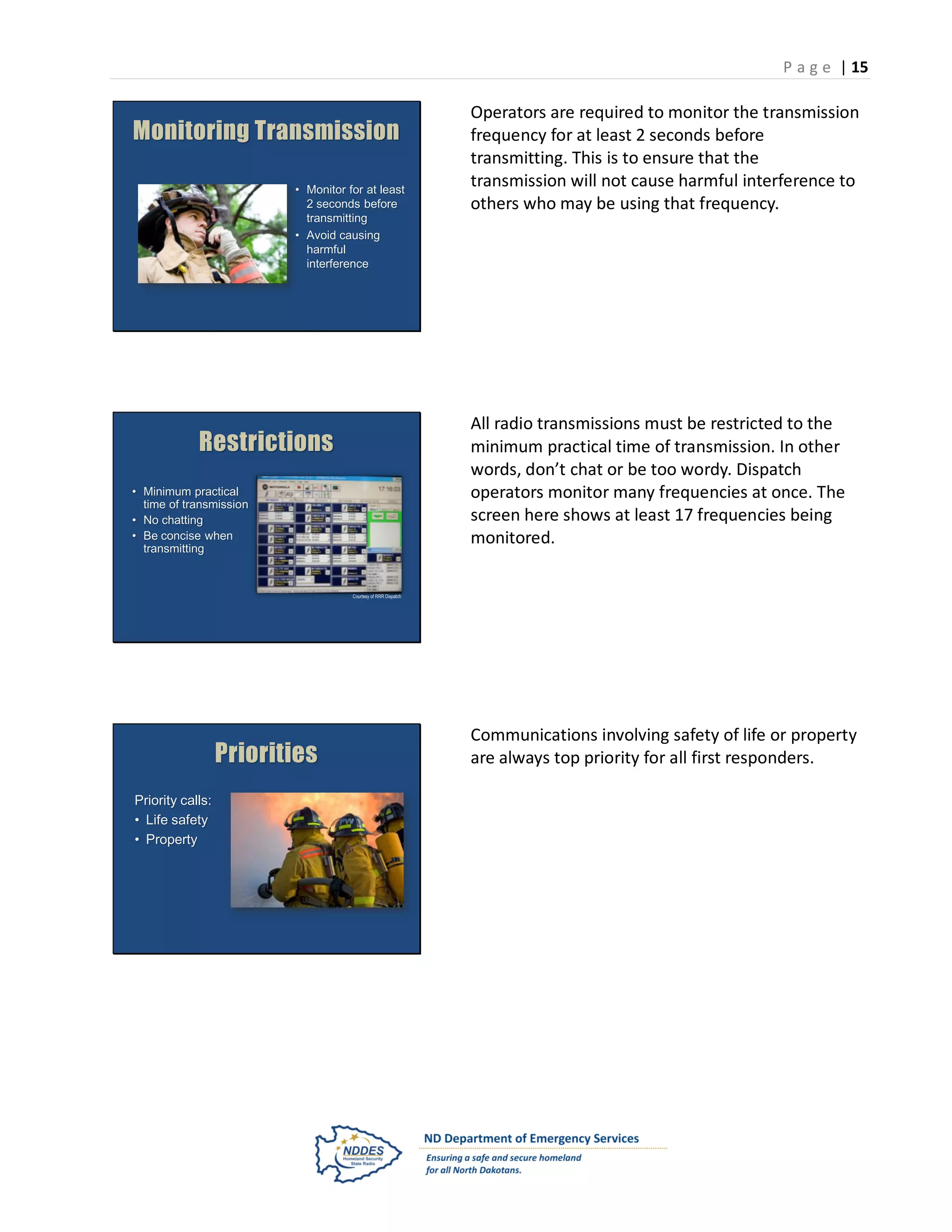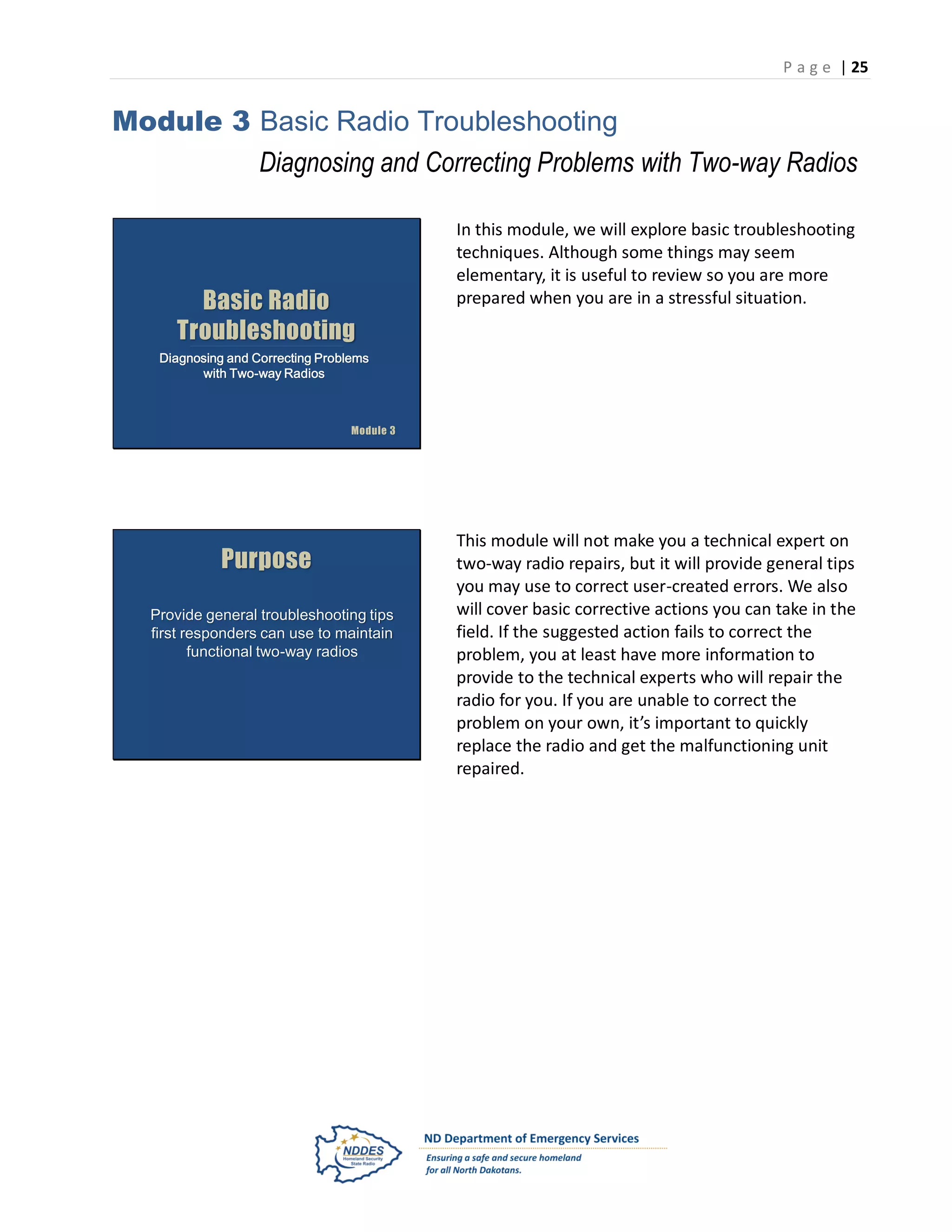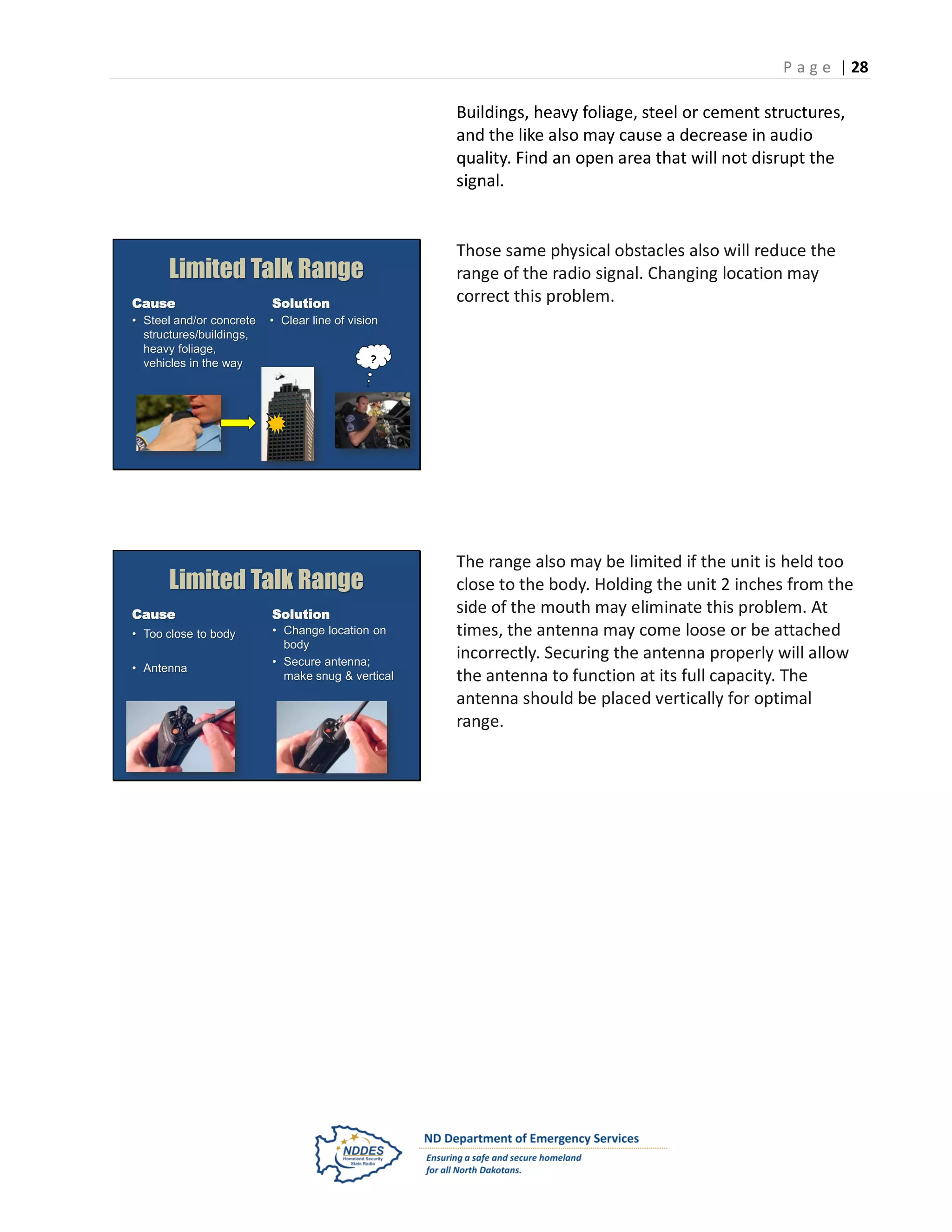The document provides an overview of a training on basic radio communication for emergency responders, outlining the key components of radios like antennas, push-to-talk buttons, and batteries, as well as explaining concepts like frequencies, analog vs. digital signals, and the importance of proper radio protocol.

